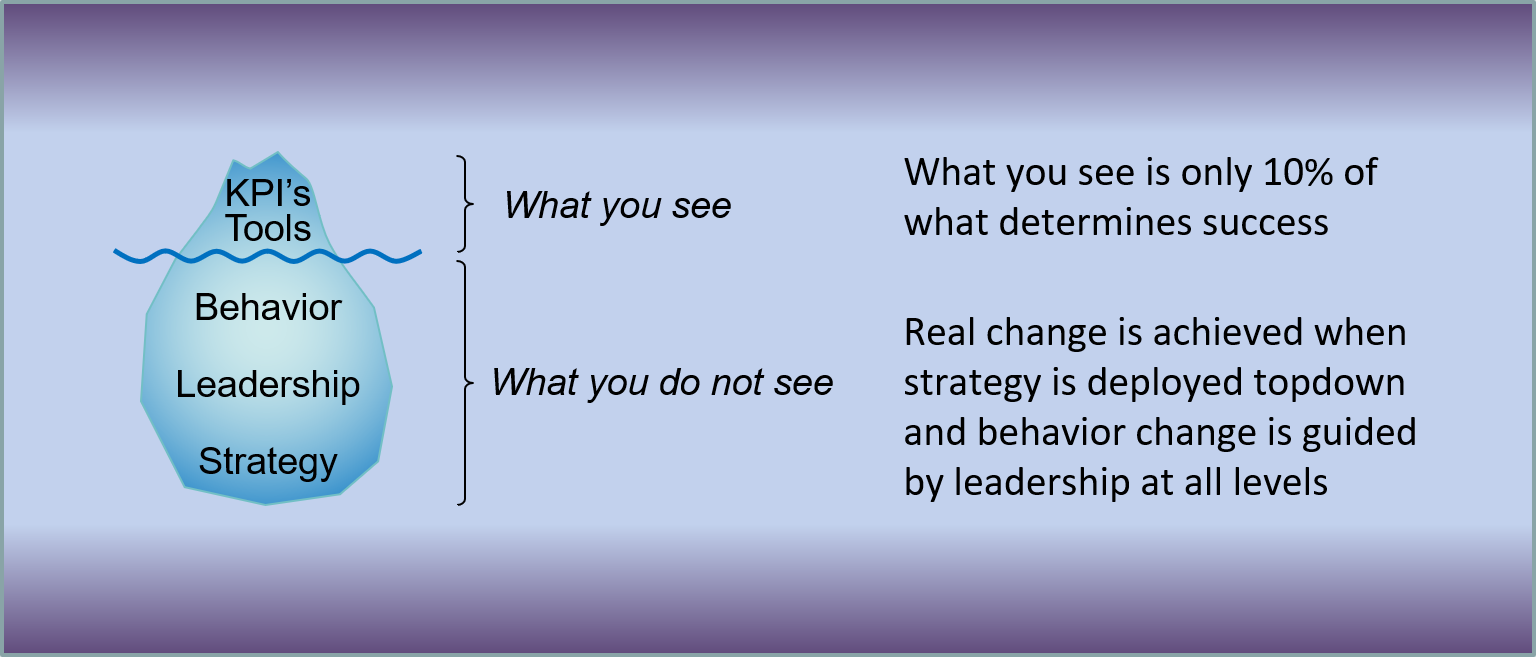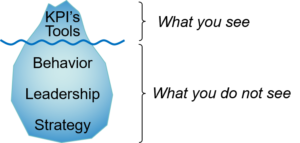Demand Planning: the holy grail of Supply Chain Management?

Demand planning… did you ever take a moment and look at that combination of just those two words? Didn’t it strike you as an odd phrase? I mean, how do you plan for demand?
You can forecast demand and subsequently plan supply – right? Let’s take a closer look.
Forecast Demand
How do we forecast demand? Forecasting is difficult, and accurate forecasting is merely impossible. As a former colleague once said: “There are two types of forecast: wrong and lucky. And we don’t get lucky very often!”
How are forecasts created then? The most common definition reads:
Forecasting refers to the practice of predicting what will happen in the future by taking into consideration events in the past and present.
In practice, this means that we usually start with best estimates based on historic extrapolations, possibly adjusted for seasonal effects. Then we add planned changes in distribution (channels, customers) and/or products. This process can be enhanced through pilots, smart algorithms, marketing, price setting, or other creative approaches.
While all of these can be planned, their effectiveness (success) and subsequent impact on the demand forecast remains nothing more than an educated guess. And guessing introduces uncertainty. That’s why we call it a forecast – and not a plan.
So why bother forecasting demand? Well, we need a demand forecast (be it inaccurate by definition) in order to plan some form of supply. After all, a forecast is an indirect commitment to source (buy or produce) products.
Demand triggers supply.
Supply should equal demand.
Plan Supply
So how do we plan supply? Here too, let’s start with the most common definition:
Planning is more concrete and involves creating a detailed course of action to achieve a specific outcome in the future based on known parameters and timelines.
The subsequent concept of supply planning is actually very simple: take your current stock level and calculate this forward while deducting the forecasted demand (shipments out) and adding the planned supply (deliveries in) from production or suppliers. Just make sure you are never out of stock (lost sales) and in the end have zero obsolete stock (sunk cost). Maybe retain some safety stock to be on the safe side.
All simple in theory, but execution is more tricky and in essence a continuous balancing act. That discussion is for another time.
Plan Demand?
So, back to the original predicament: can we plan demand? Is such a thing even possible? Is it the holy grail? From the above definitions, it is clear that determining future demand is like forecasting, while determining supply is like planning.
In the end, it is very simple:
You can forecast demand.
You can plan supply.
You cannot plan demand!
There it is! Planning demand is impossible and as such indeed the holy grail of supply chain management. Why do so many people refer to demand planning? Or even have it as their job title? Beats me – maybe it just sounds good?
And if you’re not convinced and still think you can plan demand, please go to the nearest casino: you’ll be set for life before the end of the day.
In closing, please forgive me when I frown every time I see the phrase “demand planning”…
Note from the author: the term demand planning is also used in a different context, that is as the overall process of what I would call “supply chain management”. For similar reasons, in this context too does “demand planning” seems an odd combination of words.
Special thanks to Frank Schröder, Ruud Vullers, Fried Enting, Tamara van Loo, John Franey, Peter Beerta en Hylke de Cock for their insightful input and constructive feedback when writing this article.
Published xx April 2024 on LinkedIn.
The Four V's - a perspective to trigger self-motivation

People are key to the success of your organization. You can have the best strategy, products, equipment, processes, suppliers, and so on, but all of that is of no value if the people in your organization do not turn this into success.
So how do you assure that people succeed in doing so?
The simplest of answers is that we need to have the right people that are properly trained. And that they have the best tools; best processes; perfect working environment; and so on. Great, these are all things we can arrange for – and many companies have done so. But why is that still not enough to guarantee success?
I have been observing this for many years and I have come to the conclusion that the above question is the wrong question to ask! The right question to ask is:
How do we assure that people want to succeed in doing so?
Say what? Doesn’t everybody want to succeed? Yes, of course! However, that does not mean that people will act accordingly – right? Why is that?
The key factor is motivation, to be more precise: self-motivation.
Self-motivation (formal term would be intrinsic motivation) is one of the most powerful attributes of human beings. If people are self-motivated to do something or achieve something, they will try hard and relentlessly until they succeed. Conversely, if they are not self-motivated they will barely try or give up at the first setback. Even the printer being out of paper can trigger such mindset or behavior.
Ok, so now we have something to focus on. How do we self-motivate people?
Hmm, that question is kind of a contradiction in terms. You cannot self-motivate somebody – that would be like telling someone to be happy. Just doesn’t work. The opposite, however, is very easy: demotivating people – just like making someone unhappy – does not require much effort. To this extent I would invite you to read my article on “Why motivating people is not motivating them.”
Many books have been written about (self) motivation and I am not going to recite them here, nor refer to them. However, two factors are key to self-motivation. First, it is important that employees feel connected to their company and are proud of the products and services it provides. This requires good leadership that defines and communicates a clear vision with supporting strategy and tactics. Second, people need to feel that they can contribute to this on a daily basis and in a meaningful way.
The first factor is relevant for everybody in the organization and its initial responsibility lays with the executive leadership of the company. The second is where you, as a manager or co-worker, can make a difference at your own level.
So what can you do?
Over the years I have developed a personal approach that I like to refer to as the “Four V’s to self-motivation”.
This approach is based on the balance between give and take: you give Trust (in Dutch: Vertrouwen), Freedom (Vrijheid) and Safety (Veiligheid); and in return ask Responsibility (Verantwoordelijkheid).
Note: the 4 V’s are derived from the Dutch language and make a neat acronym. I guess that is ok, as we all accept and use the 6S’ from Operational Excellence, even though they are derived from Japanese. J
So you give – without hesitation and from day one:
Trust (Vertrouwen)
I shiver when I hear people say that trust is to be earned. What a negative mindset! What you are actually saying is that you do not trust anybody. Great way to start – not so! Besides people not knowing exactly what it is they need to do to earn your trust, they will also never believe you when you finally do say that you now trust them.
I always start by trusting people from the onset, and I tell them this: “I believe that you tell me the truth and act in good faith”. Many people quickly respond to this in a positive manner and after some time the rest of them do too.
Freedom (Vrijheid)
Lack of trust often also results in lack of freedom, or worse, in contradictions between trust and freedom: “I trust you, but will check on you anyway”. Freedom is a management concept that comes in many forms (empowerment, delegation, accountability, etc). I have seen efforts to achieve these concepts fail due to the lack of trust between parties.
I therefore always start by not only telling people that I trust them, but also that I will give them room (freedom) to go out and do what they need to do to the best of their knowledge and insights. And if they feel they cannot do that properly, I trust them to come to me and we will see together what can be done.
Side note: freedom is not a carte blanche. People still need to adhere to the law and company policies, and act in line with the company’s norms and values.
Safety (Veiligheid)
So what if things go wrong? Hold them accountable – right? Well, yes and no. It depends on how you go about it. If you trust people and give the freedom to achieve the results you are looking for, they are bound to make mistakes – and that is ok! If you burn them to the ground – that is not ok: getting angry with people when they make mistakes does not teach them not to make mistakes again, it teaches them to better hide them or blame others.
I welcome people to talk about their mistakes or failures, as these are great moments of learning on how to improve and grow personally and professionally. Making mistakes is part of a learning process (we all fall a lot before we can walk).
Safety is also about pressure from others. I once heard a great quote: “A good leader steps in front of people when under attack, and stands behind people when praise is given” (source unknown). Makes sense, right? Ever seen the opposite happen? What did that do with trust, freedom and safety? And (self) motivation?
Ok, so now I have told you what I will give. Let’s talk about what I expect back.
Responsibility (Verantwoordelijkheid)
I have already kind of explained this above: I expect people and explicitly ask them to use the trust, freedom and safety that I provide in a responsible manner. I know and accept that people feel uneasy about this (probably based on negative experiences in the past) and need time to adjust, accept and act accordingly. So I give them that time.
I once had someone come to me to sign off his work. I told him that I will indeed sign, but not for the content of his work: I will sign that I trust that he has done his work sufficiently and filled out the report properly. He looked at me, hesitated and took the report back, saying: “Let me double check.” He returned a few hours later and I signed the report blindly. He later told me he found my approach very confronting and did not like it at first. He later realized it was a full circle combination of the four V’s and said he liked it after all.
Self-Motivation
So, how does this translate to self-motivation? My reasoning is that the concept of the 4 V’s basically is a high form of mutual respect. And people who feel respected are more prone to be self-motivated, unleashing their potential and improving their contributions to the organization in many ways.
Is it that simple? Yes, I think it is.
And what about those who willfully and continuously take advantage of the trust, freedom and safety that I provide? First of all, those people will also defy you when you do not use the 4 V’s – they will just be better at hiding it. Secondly, if they continue this behavior then there is only one outcome… and they can close the door on their way out. I am proud to say that after being in business for more than 35 years, I have only encountered less than a handful of people that I had to fire based on such behavior. The funny things is that the remaining colleagues are always glad that that person is gone – so that’s a double bonus.
Conversely, I have seen many, many, many people flourish by growing into their potential and be happy and contributing employees, raising the whole organization to a higher level. I choose that over a few rotten apples any day!
So, in conclusion: trust people, give them freedom and provide a safety. They will live up to it and accept the responsibility you give them. This balance enhances mutual respect and fuels self-motivation. In his manuscripts W.E Deming – the father of quality – referred to this as sustaining an environment that allows for “Pride of workmanship”
Try it… And be amazed!
Special thanks to Frans Leijse, Frank Schröder, Ruud Vullers, Richard Stadt, Fried Enting, Maarten Bijster, Parmeshwar Sharma, Nils Duinker and Teun Kooijman for their insightful input and constructive feedback when writing this article.
Why motivating people is not motivating them

Huh? But I thought…?
Let me explain. Many books have been written about how to motivate people. They all tell you what you have to start doing differently – and there is definitely value in that. But they often fail to tell you what you have to stop doing. And that’s where the crux is.
My premise is that people motivate themselves.
Put them in the right setting, with clear direction and inspiration, and you will be amazed what can happen. Add empowerment and you’re on the way. Are you?
If it is that simple then why does it often not work?
The problem is that there is a very important prerequisite that is often overlooked: before you can start motivating anybody, you first have to stop demotivating them.
Demotivation is the single most underestimated problem in any organization. If people are demotivated then it is very difficult to get them to buy into your vision and move towards your goals. Sure, initially you might see some improvements – but will they last? Did they last when you last tried?
So what’s going on?
Organizations and managers – over time and unintentionally – breed demotivation.
Demomivation is in the small things. Demotivation hampers selfmotivation. Demotivation affects behavior.
Demotivation is contagious.
So what demotivates people then and what can you do to change that?
The funny thing is that people constantly tell us what demotivates them. They don’t tell us when asked and they don’t tell us in meetings where we try to address it. Yet they do tell us about it at the coffee machine, at lunch, at birthday parties, at the sideline of a soccer game, and so on.
That’s where you need to listen. And you will find out that many of these demotivators are not what you expect:
There are two types of demotivators:
Personal:
My computer is slow
My desk is unstable
My tools are broken or missing
My chair is too small
My office is drafty
My locker doesn’t lock
My…
Communal:
The printer breaks down all the time
The railing of the stairs are loose
The toilets are dirty
The office area is noisy
The lighting is flickering
The floor is slippery
The…
Notice that these demotivators are not about what you do as a manager. And they are also not about things that are deemed to motivate people – like leadership, style, behavior, communication, etc.
Instead they are about things you can fix – but (often) don’t, giving people the experience that you don’t care… about them. They are about things that aggravate people every time they experience it – often multiple times per day, building up discontent and feeding demotivation. The bucket gets filled one drop at the time.
They are also about things on which you will get zero credit if non-existent, but you will definitely lose points when they occur.
To drive it home: when is the last time you heard someone brag at a birthday party that his desk is stable? There is no draft in the office? The toilets are clean? The lighting always works?
As said, when such problems are non-existent you get no credit, but people will talk about it when they do exist.
And that feeds demotivation.
And demotivated people can not self-motivate.
And you definitely can not motivate demotivated people either.
Demotivation is like quick sand: it swallows and drowns all your good intentions.
So, solution?
Simple: before you can even think about motivating people, stop demotivating them first!
Fix the desk, the lighting, the printer, the toolbox, the toilets, etc. Involve people in identifying these issues and give them their own budget to have it fixed. I have done this several times and people are at first surprised, don’t believe it and don’t act on it. Keep at it though (eg. put up a whiteboard to write down issues) and when they do start you will be amazed what happens with attitude and behavior: self-motivation gets unleashed.
And when self-motivation is on the uprise, you are creating fertile grounds for all your well-learned managerial motivation tools. Go use them – your team (organization) is ready for them!
(I will soon write an article about that too)
By the way, did I just explain the relevance of 6S to you? Yes, I did. 6S is all about the impact of the workplace on behavior and culture – the foundations of real Operational Excellence!
Try it… no do it! And be amazed!
Special thanks to Hylke de Cock, Ruud Vullers, Frank Schröder, Fried Enting, Parmeshwar Sharma, Maarten Bijster, Pascal van Heel and Tom van Thiel for their insightful input and constructive feedback when writing this article.
Published 22 March 2022 on LinkedIn.
Why LEAN and 6-Sigma will not bring you Operational Excellence

Huh? But I thought…?
Let me explain. Many companies are implementing these tools to minimize waste and reduce throughput times (LEAN) and reduce process variability and unpredictability (6-Sigma), claiming just that will bring them Operational Excellence (OpEx). They are wrong!
LEAN and 6-Sigma are just a few of the many tools that OpEx has to offer to improve performance. They are project-based and KPI-driven, but the achieved improvements will only last (sustain) when the company’s culture is also transformed to breathe continuous improvement with every decision and every action at all levels of the organization – day in and day out!
How is that achieved?
It requires more than just some tools. It requires clear strategic policy deployment, clear leadership and a clear set of behavioral guidelines that must be embedded in the organization.
The Iceberg Model of OpEx
The Iceberg Model of Operational Excellence (also known as the LEAN Sustainable Iceberg Model by Peter Hines, et al) provides a useful understanding of the interaction between tools and KPI’s versus strategy, leadership and behavior:

The part of an iceberg that you see above the waterline is determined by the size of the iceberg under water. The analogy is that implementing tools and KPI’s alone is not enough: they need to be supported (lifted) by clear strategic deployment, supporting leadership and guided behavior. Without that, the impact of tools and KPI’s is not sustainable longterm.
Strategy
The “Strategy” in the model refers to strategic policy deployment, or strategic deployment for short. What is strategic deployment? There are many books written about the clinical side of strategic deployment, about how it is the process or framework of translating a company’s strategic direction (why) into a concrete tactical plan (how) in order to achieve operational results (what). Often, senior management will put together a vision & mission statement which translates into a strategy. They will most likely also define strategic objectives and a tactical roadmap with milestones and targets for the next few years. And this then forms the basis for developing annual budgets (operational and investments) and cascading KPI’s into lower level metrics throughout the company.
To do this really well, this process should not be done one-way and top-down, but iterative: still driven top-down by strategic objectives, but iterated through multiple sessions with intermediate feedback and finetuning, each time deeper and deeper into the organization. The Hoshin-Kanri method and X-matrix tool provide useful support on how to approach this.
Have we now deployed our strategy? Not yet!
Communication
We also need to communicate all these elements to our employees and key stakeholders: the real deployment. They need to understand where we are going and why; how we are going to get there; and what it will bring us. This is needed to build cross-functional teams with a common set of understanding and purpose, to enable people to make day-to-day decisions in line with our goals, and to create a culture of continuous improvement. And we need leadership at all levels to bring it home (see below).
How do we communicate this effectively?
I am a great fan of Simon Sinek’s Golden Circle. Please check it out to better get an idea of how to word the message. Take this message and bring it to your employees. Hold a roadshow: involve and engage managers at all levels, talk to Workers’ Councils and present your plans at info sessions to all employees. And don’t forget to add Q&A sessions to allow two-way interaction – you might learn something during the process. 😉
Why is strategic policy deployment so important? Well, asking that question is almost an insult, but let me put it simply: “If you don’t know where you are going (strategic direction), then every path is the right way (tactical roadmap), but you will always end up in the wrong place (operational performance)!” Get it?
Leadership
What is leadership and why is it important? Several years ago I ran into the following definition of leadership (source: internet) that best works for me: “Leadership is about inspiring and self-motivating people towards a common goal, where management is about instructing people what to do based on a plan.”
(Side note: successful companies do both!)
We are all educated and trained to act as managers. Few of us have been explained about or even trained for leadership. Leadership takes place at all levels of an organization. It does indeed have a correlation with management as a function, but it is more than that. Some leaders do not have a management function, but they can carry a team nonetheless. We best observe that in sports, where not the coach nor the captain, but one of the players can lift a team at crucial moments in the game by inspiring team mates to give the extra effort when it is needed!
Leaders are the ambassadors of change. For some people leadership comes naturally, but it can be trained too. Unfortunately, only few companies recognize the importance of leadership. Most companies have no focus on hiring, identifying, cultivating and positioning leaders as part of their workforce. As a result, they can only achieve results through “cold” management objectives that are cascaded down the ranks, but they will never achieve the extra effort needed to excel: there is just not enough management power to do so.
Behavior
This brings me to the last element: behavior. What is behavior? Many books are written about behavior too. Most definitions boil down to the way people or groups of people act or interact, influenced by personal beliefs and the environment in which they operate.
How does that help and why is this relevant?
Well, it is about people, both as individuals and as groups. They determine how a company performs. Systems, processes, IT, technology etc. are all supportive, but it all comes down to people. They need direction through deployment, communication, leadership and guidance on how to act and work together – day in and day out.
It helps to define company values, which often include terms like respect, honesty, equality, etc. Without further explanation, such values often do not really affect or guide behavior. We need to provide more specific guidance, like a simple “be on time for meetings” or “deliver actions when agreed”. More advanced: “listen to understand” or “take ownership” add more clarity, although these behavioral elements also require a certain level of skills. The good news is, they can be trained too.
Personally, I like the approach described in the books ’The Oz principle’ and ‘Change the Culture, Change the Game’, written by Roger Connors et al (for more info: www.ownpower.nl). This approach also includes the power of personal (or group) beliefs, which is often underestimated resulting in failed culture programs.
And now?
Ok, have you done all this? If yes, now Operational Excellence has a chance in your company. It is still not a given you will succeed in achieving world class performance, but it is a good start of a journey without an end.
Special thanks to Hylke de Cock, Ruud Vullers, Frank Schröder, Fried Enting, Harry Smeding, Maurits Werkhoven, Peter Beerta and Tom van Thiel for their insightful input and constructive feedback when writing this article.
Harvard Business School case study: Green Marketing at Xerox

Xerox Corp. is on the verge of launching a new line of photocopiers made largely from refurbished or recycled parts. In spite of this reclaimed content, the company intends to position the machines as “new.” The move is a response to growing environmental pressures in Western Europe and throughout the world. The challenge is how to bring the new line to market, especially with respect to pricing and promotion.
